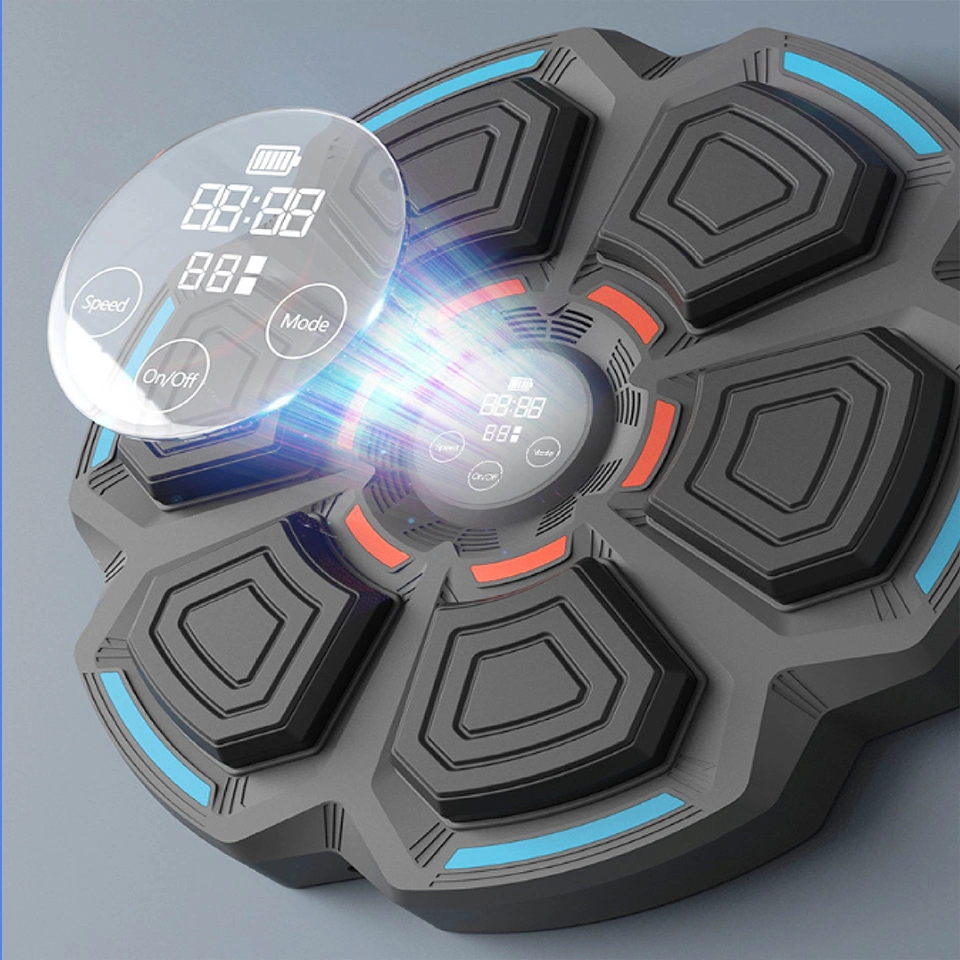Minimalism in Fitness Equipment: Embracing a Screenless, Tactile Future

In a world where technology is evolving at breakneck speed, the fitness industry is witnessing a significant shift. The new generation of smart devices is moving away from the traditional screen-based interfaces to focus on tactile feedback and sensor-driven interactions. This transformation is not just about sleek designs—it’s a paradigm shift in human-computer interaction, where our bodies and senses lead the experience. One standout product in this trend is the Intelligent Music Boxing Machine with Gloves, which leverages cutting-edge sensor button technology to offer an immersive workout experience.
The Rise of Screenless Fitness Equipment
A Shift Toward Minimalism
Fitness enthusiasts and tech-savvy users alike are increasingly drawn to devices that simplify interactions. Traditional screens can often become a distraction, pulling attention away from the physical activity at hand. Screenless fitness equipment strips away unnecessary interfaces, focusing instead on direct tactile interactions. This minimalistic approach not only reduces clutter but also encourages a deeper connection between the user and the technology.
Enhancing Human-Computer Interaction
The evolution of fitness equipment is a testament to the broader trend in human-computer interaction (HCI). Modern devices are designed to respond intuitively to our touch, movement, and even the rhythm of our heartbeat. By employing sensor button technology and advanced tactile feedback systems, these devices create a seamless interface that feels natural and engaging. The Intelligent Music Boxing Machine, for instance, transforms a routine boxing session into an interactive performance where every jab and hook syncs with dynamic music, enhancing both physical training and mental focus.
Tactile Feedback Training: The New Frontier
Why Tactile Feedback Matters
Tactile feedback is emerging as a key element in fitness equipment design. It bridges the gap between digital commands and physical movement, offering real-time, physical responses that can significantly enhance training sessions. This technology not only improves the accuracy of movements but also helps users develop a better sense of timing and rhythm. For instance, in boxing training, the precise impact of each punch is critical. Tactile feedback provided by sensor button technology ensures that every strike is accurately registered and responded to, creating an engaging and effective workout.
Benefits of Sensor-Driven Workouts
- Enhanced Realism: Sensor button technology captures even the slightest movement, ensuring that every action is mirrored with precision in the digital realm.
- Improved Performance: Real-time feedback helps users adjust their techniques instantly, leading to faster skill development.
- Increased Engagement: The physical sensation of tactile feedback makes workouts more immersive, turning training sessions into interactive experiences.
- User-Centric Design: By eliminating screens, devices become less intrusive, allowing users to focus entirely on their physical performance.
The Technology Behind the Transformation
Sensor Button Technology in Action
At the core of the Intelligent Music Boxing Machine lies advanced sensor button technology. This innovative system is engineered to capture high-resolution data from every movement. Instead of relying on visual cues from a screen, users receive immediate, haptic responses that guide their training. This approach is not only intuitive but also mirrors the natural way humans interact with the world—through touch and movement.
Integrating Music and Movement
One of the most compelling aspects of the Intelligent Music Boxing Machine is its integration of music with physical exercise. By synchronizing sensor data with music, the device creates a harmonious training environment where every beat corresponds to a physical action. This synergy between auditory cues and tactile feedback enriches the user experience, making workouts more enjoyable and effective. The result is a fitness routine that feels less like a chore and more like an art form—a dance between human instinct and smart technology.
Future Trends in Sensor Technology
As sensor technology continues to advance, the potential for further innovation in fitness equipment is enormous. Future devices are likely to incorporate even more sophisticated sensor arrays, capable of detecting subtle variations in movement and pressure. This could lead to personalized training regimes that adapt in real-time to a user’s performance, further enhancing the benefits of tactile feedback training.
Why the Intelligent Music Boxing Machine Stands Out
A Game-Changer in Modern Fitness
The Intelligent Music Boxing Machine with Gloves is not just another piece of fitness equipment—it is a revolutionary tool that embodies the new wave of screenless, sensor-driven training. Its design reflects the current trend of minimalism, where less is more, and the focus is on creating a natural, human-centric interaction. With its intuitive sensor technology and immersive tactile feedback, this machine offers a workout experience that is both engaging and highly effective.
Real-World Impact
For athletes and fitness enthusiasts, the benefits are tangible. The device’s ability to deliver precise, real-time feedback makes it an invaluable tool for improving technique and overall performance. Moreover, by integrating music into the training process, it transforms exercise into a multisensory experience that keeps users motivated and focused.
Conclusion
The trend toward screenless fitness equipment is more than a design choice—it represents a significant evolution in how we interact with technology. By embracing tactile feedback training and advanced sensor button technology, devices like the Intelligent Music Boxing Machine with Gloves are paving the way for a more natural, effective, and engaging workout experience. This shift not only enhances human-computer interaction but also opens up exciting new possibilities in the realm of fitness and sensor technology.
As the industry continues to innovate, we can expect more fitness devices to follow suit, prioritizing user experience over flashy screens and complicated interfaces. The future of fitness is here, and it’s tactile, intuitive, and remarkably human-centric.
